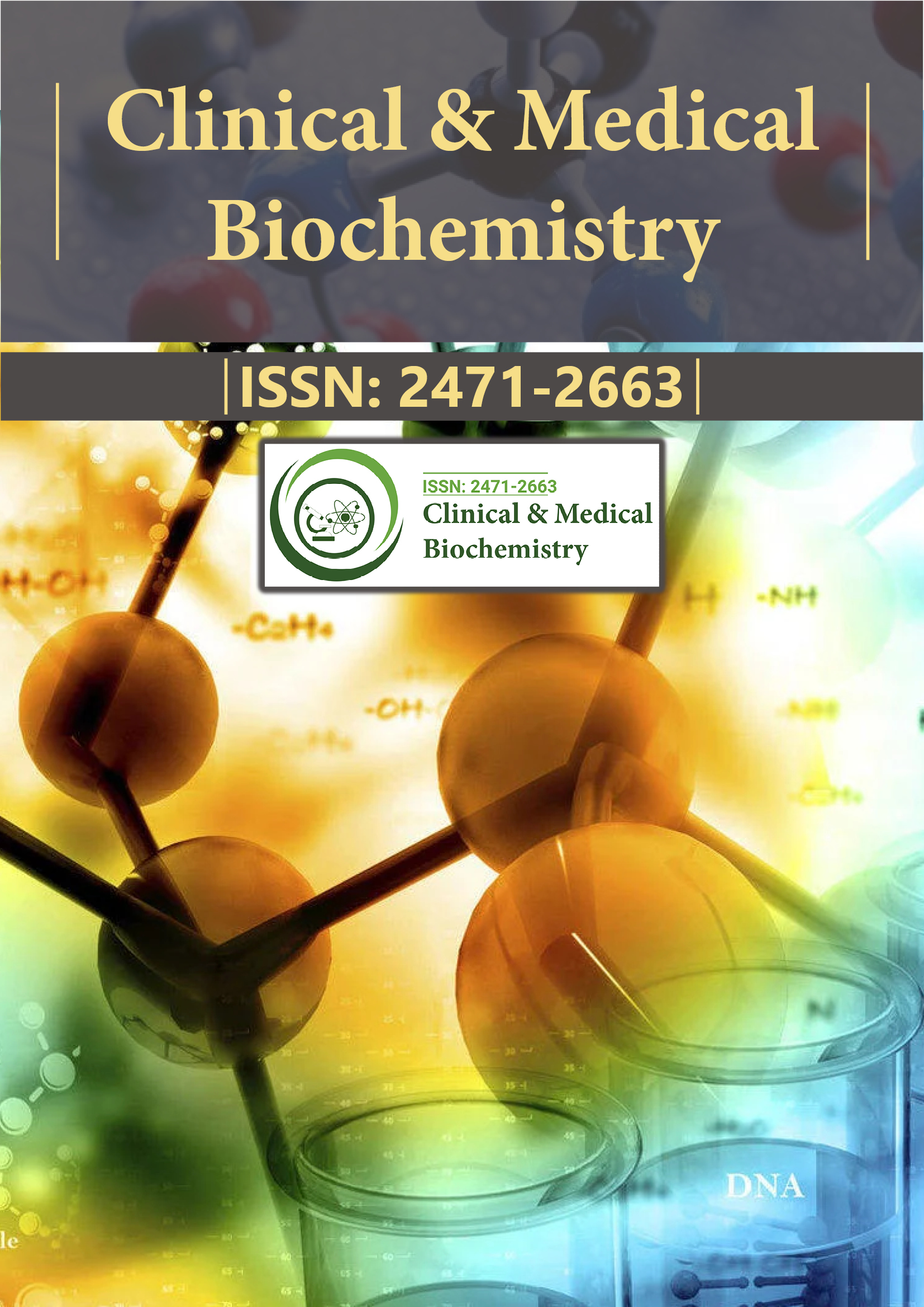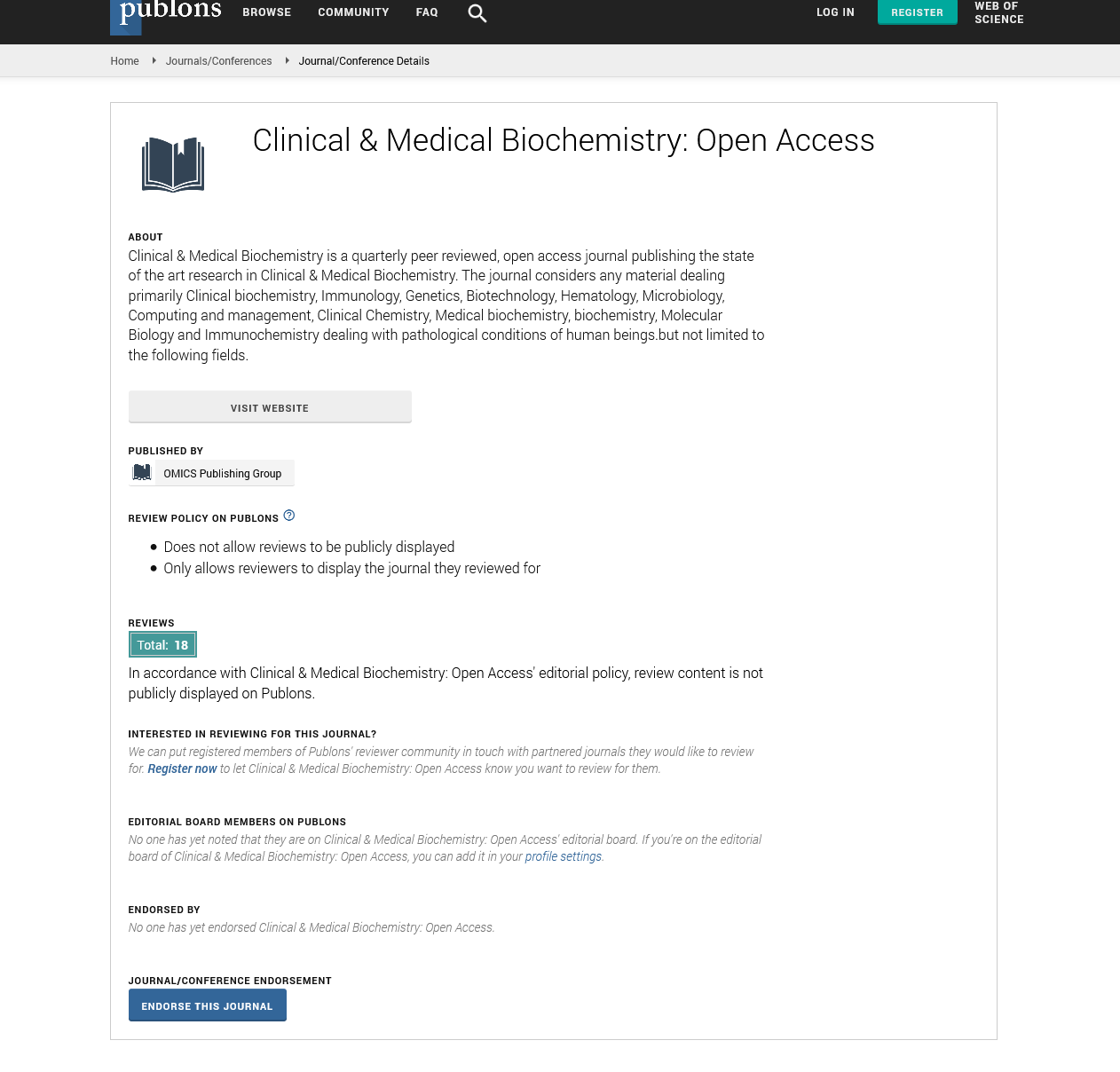Indexed In
- RefSeek
- Directory of Research Journal Indexing (DRJI)
- Hamdard University
- EBSCO A-Z
- OCLC- WorldCat
- Scholarsteer
- Publons
- Euro Pub
- Google Scholar
Useful Links
Share This Page
Journal Flyer

Open Access Journals
- Agri and Aquaculture
- Biochemistry
- Bioinformatics & Systems Biology
- Business & Management
- Chemistry
- Clinical Sciences
- Engineering
- Food & Nutrition
- General Science
- Genetics & Molecular Biology
- Immunology & Microbiology
- Medical Sciences
- Neuroscience & Psychology
- Nursing & Health Care
- Pharmaceutical Sciences
Commentary Article - (2024) Volume 10, Issue 2
Coagulation Factors: Significant Functions in Hemostasis and Other Disorders
Hana Sakura*Received: 25-Apr-2024, Manuscript No. CMBO-24-25755; Editor assigned: 29-Apr-2024, Pre QC No. CMBO-24-25755 (PQ); Reviewed: 14-May-2024, QC No. CMBO-24-25755; Revised: 22-May-2024, Manuscript No. CMBO-24-25755 (R); Published: 30-May-2024, DOI: 10.35841/2471-2663.24.10.213
Description
Coagulation factors are a complex system of proteins that are essential to the regulation of hemostasis, the body's defense mechanism against excessive bleeding following vascular injury while preserving blood volume in the circulatory system. A blood clot is formed when this complex network of proteins interacts, blocking off damaged blood arteries and aiding in tissue healing. Gaining knowledge of the composition, actions, and control of coagulation factors helps to explain the physiological processes behind hemostasis and its disruption in a range of pathological situations. The intrinsic pathway and the extrinsic pathway are the two main pathways that make up the coagulation process. These pathways come together at a similar point to produce thrombin, which then changes fibrinogen into fibrin, resulting in the formation of a stable blood clot. Intrinsic factors initiate the pathway, which becomes active upon contact with subendothelial surfaces that have been exposed due to vascular damage. When factor XII, often referred to as the Hageman factor, comes into touch with negatively charged surfaces such as collagen, it starts the intrinsic route, which in turn activates factors XI and IX. The process by which factor X is activated is by the tenase complex, which is made up of factors IXa, VIIIa, and calcium ions.
Tissue Factor (TF), a transmembrane protein expressed by cells outside the circulation, such as subendothelial cells exposed during tissue injury, on the other hand, initiates the extrinsic pathway. Factor VII and TF combine to produce a complex, which activates factor VIIa, which then activates factor X. The extrinsic pathway for factor X activation eventually converges with the intrinsic pathway to generate the prothrombinase complex. The conversion of prothrombin to thrombin, an essential enzyme in the procedure of coagulation is catalyzed by this complex, which is made up of components Xa, Va, and calcium ions. The primary component of hemostasis is thrombin, which mediates the transformation of soluble fibrinogen into insoluble fibrin threads that subsequently polymerize to create a durable blood clot. Additionally, thrombin contributes to platelet activation, enhancing the coagulation process and developing hemostasis. Beyond its involvement in clot formation, thrombin also contributes to tissue repair processes by regulating vascular tone and permeability and exhibiting pro-inflammatory qualities.
Except for factor VIII and von Willebrand Factor (vWF), which are also produced by endothelial cells and megakaryocytes, coagulation factors are mostly formed in the liver. Initially produced as zymogens or inactive precursor proteins, these factors must undergo proteolytic cleavage to transform into active enzymes that can take part in the coagulation process. The biological activity of coagulation factors depends on the posttranslational modification of these factors, which requires vitamin K to enable the carboxylation of glutamate residues in their precursor forms. Procoagulant and anticoagulant mechanisms are carefully balanced to produce hemostasis management, which ensures the timely production and dissolution of blood clots. Circulating serine protease inhibitor Antithrombin III forms irreversible complexes with coagulation proteases, including thrombin and factor Xa, making them inactive. Similarly, tissue factor-factor VIIa complex binding and factor X interaction are prevented by Tissue Factor Pathway Inhibitor (TFPI), which blocks the start of the extrinsic route.
The protein C pathway is another important anticoagulant mechanism that controls the production of fibrin and thrombin. Factors Va and VIIIa become inactive by activated protein C, which is produced by the thrombin-thrombomodulin complex on the surfaces of endothelial cells. This inhibits the coagulation process's amplification and stimulates fibrinolysis. By improving protein C's anticoagulant action and serving as a cofactor for its activation, protein S modifies the ratio of procoagulant to anticoagulant pathways. Depending on the kind and extent of the fundamental area, dysregulation of coagulation factors may result in thrombotic problems or bleeding disorders. Deficiencies in factor VIII and factor IX, respectively, cause hemophilia A and hemophilia B, hereditary bleeding disorders marked by reduced blood clot formation and prolonged bleeding times. Another hereditary bleeding disorder called von Willebrand disease is brought on by deficiencies or abnormalities in the von Willebrand factor, which is essential for platelet adhesion and aggregation at vascular injury sites.
Thrombophilia is a collection of genetic or acquired disorders marked by an increased tendency for blood clots, also known as thrombosis, to form in the veins or arteries. Thrombophilia is linked to several genetic risk factors, including deficiency in antithrombin, protein C, or protein S, prothrombin gene mutation, and factor V Leiden mutation. One of the acquired thrombophilic disorders is antiphospholipid syndrome, which is defined as autoantibodies directed against phospholipid-binding proteins that increase the risk of thrombotic events.
Conclusion
Coagulation factors are essential for preserving vascular integrity and avoiding severe bleeding or thrombosis. Hemostatic equilibrium is protected by the delicate balance between procoagulant and anticoagulant systems, which ensures quick production and dissolution of blood clots in response to vascular injury. The complexities of hemostasis must be noticed for clinical management and therapeutic interventions, as dysregulation of coagulation factors can result in bleeding disorders or thrombotic consequences.
Citation: Sakura H (2024) Coagulation Factors: Significant Functions in Hemostasis and Other Disorders. Clin Med Bio Chem. 10:213.
Copyright: © 2024 Sakura H. This is an open-access article distributed under the terms of the Creative Commons Attribution License, which permits unrestricted use, distribution, and reproduction in any medium, provided the original author and source are credited.

